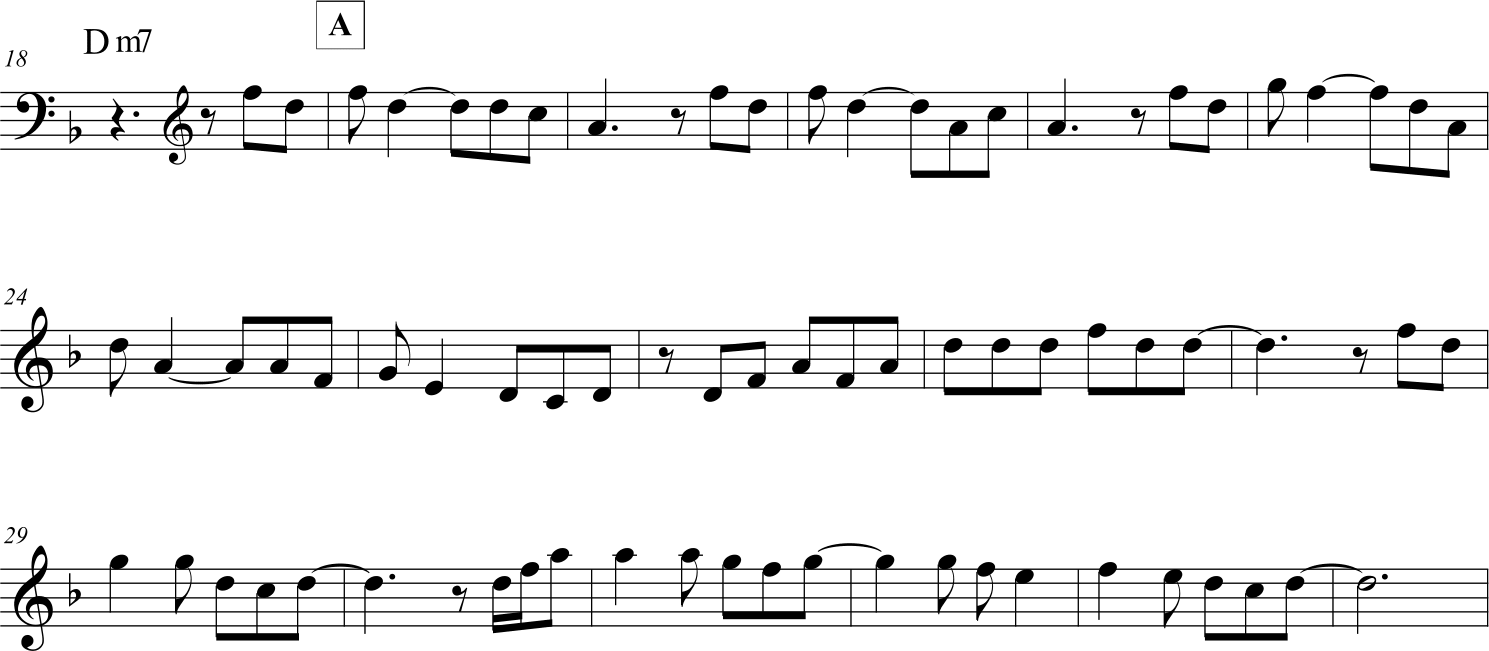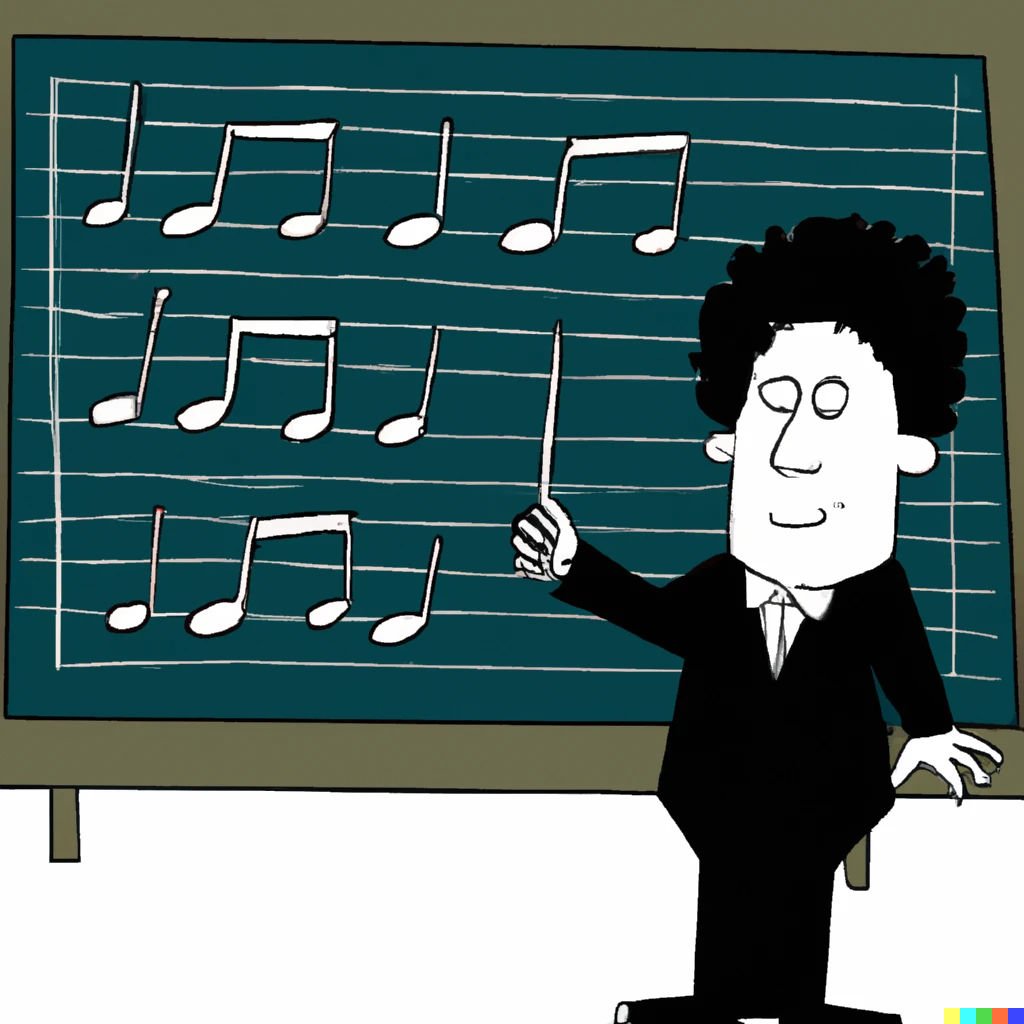What is the difference between simple and compound time? Often the beginner student is misled by the term “simple time” and thinks it is a synonym for “easy time”. This is why any tempo that is unusual and difficult can be misclassified as compound time.
The difference between simple and compound time, on the other hand, has nothing to do with the greater or lesser “difficulty” of a musical beat, so let’s try to sort out and define precisely the difference between these two types of musical time.
Introduction: time in Western music
The definitions of simple and compound time presuppose a division of music into regular rhythmic groups. For some centuries now, this way of conceiving music has been completely prevalent, at least within Western music. But it was not always so.
In Greco-Roman antiquity, musical rhythm was based on poetic rhythm and therefore on the spoken word. Subsequently, the perception of rhythm changed from syllabic to accent-based, until the consolidation of the mensural notation based on the repetition of a given unit of time, always the same. This is what happens when music uses a series of musical measures (or musical bars).
The reason why human beings tend to organise sounds into homogenous groups is a field of study more for anthropologists than for musicians. However, it is useful to remember that it is possible to conceive of rhythm in a different way, without respecting the classic division into equal measures (or beats). A couple of examples:
Alternative rhythmic conceptions
A singer or instrumentalist who sings “a cappella” (i.e. alone, without accompaniment) often does not respect the precise division into measures, but instead sings freely, favouring the melodic aspect. In this case, the rhythmic division into musical measures is absent, or only partially respected.
We can find another example of non-measure-based rhythmic scanning in traditional West African music, particularly music played by percussion groups.
These pieces respond to complicated rhythmic formulas that are much more articulated than the simple division into beats. In this case, rhythm is the main component of the music and is organised in a much more sophisticated and complex manner. The succession of identical musical measures that characterises European music is decidedly more elementary from a purely rhythmic point of view.
The division of music into equal units belongs mainly to the Western tradition and has spread all over the world because of its simplicity and straight forward nature. For this reason, all (or almost all) widely consumed pop music is based on regular and unchanging rhythmic cells.
The difference between simple and compound time
Let us now try to analyse more precisely the difference between simple and compound time. To do this, we need to start with a very precise concept: every musical rhythm is made up of two components:
- A number of regular pulsations
- A prevailing way in which each pulse is divided up
We must therefore consider two terms: pulse and subdivision.
The pulse is the series of regular beats that form the basis of a piece of music. In fact, almost all music has a regular beat pattern, which allows us, for example, to clap our hands in time with the music.
Subdivision is something more technical and related to how the music is conceived within each pulse.
The difference between simple and compound time does not lie in the number of pulses, but in the subdivision within each one.
When the subdivision of the pulse is binary, time is simple. An example of binary subdivision are the words index, goblin, tennis, which can be divided into two syllables.
When the subdivision of the pulse is ternary, the time is compound. In this case, we can use as an example the words fantastic, magnetic, cosmetics, which can be subdivided into three syllables
It is not by coincidence that we have seen above how the musical rhythm based on beats is a derivation of the syllabic rhythm derived from the word. Musical rhythm is more sophisticated than syllabic rhythm in that it is precise and uniform (measurable with a metronome, for example) while verbal rhythm is less regular and cannot be measured exactly.
They are simple times: 2/4, 3/4, 4/4, 5/4, 7/4 as each pulse can be divided in a binary way. For example, the 2/4 time can be associated with the phrase velvet jacket.
These are compound tempos: 6/8, 9/8, 12/18, 15/8 where each pulse is implicitly divided in a ternary manner. For example, the time of 9/8 can be associated with the phrase overcome musical obstacle.
A common mistake
Only the most frequent simple and compound tempos are listed above. If you only take these into account, you may make a mistake: thinking that when the denominator is 4 (♩ quarter note) the time is simple, while with denominator 8 (♪ eighth note) the time is compound. This error is very common and is caused by over-simplification.
Actually, the times of 2/8, 3/8, 4/8, 5/8, 7/8 are also simple times even if they have the figure of eight (♪) at the denominator, since each pulse is divisible only in binary mode. Similarly, the times 6/16 or 9/4 are compound times even though they do not have the figure of eight (♪) in the denominator, since each pulse is divisible by three.
Once again: the only way to recognise simple and compound times is to assess whether the pulse is divisible in a binary way, or whether it is possible to divide it into two or more ternary pulses.
On this website you can find a video course of Jazz Solfeggio specifically designed for those who play modern music: rock, jazz, pop. It will help you to learn to read simple and compound times.
Odd times
Some odd times can in some way be assimilated to compound times as it is natural to subdivide them. For example, a 7/8 time can be thought of as 3/8+4/8 or vice versa 4/8+3/8. However, this subdivision is dictated more by the strangeness of the time than by any real necessity.
It is not at all impossible to think of a 7/8 time without internal divisions. For this reason, I think it is more correct to indicate as simple tempos also the odd tempos that are potentially divisible, while indicating as compound tempos only those that are intrinsically divided.
Binary, ternary and quaternary times
We can determine a relationship between some simple times and the compound times that can be derived from them, for example:
- 2/4 corresponds to 6/8 since both are binary tempos, that is, composed of two pulses
- 3/4 corresponds to 9/8 in that both are ternary times, that is, composed of three pulses
- 4/4 corresponds to 12/8 as both are quaternary times, that is, composed of four pulses
A simple mathematical rule can help us: to obtain a compound time from a simple time, it is sufficient to multiply the numerator of the fraction by 3 and the denominator by 2 (or to multiply the whole time indication by 3/2). Consequently, a compound time is always divisible by the fraction 3/2.
(2/4 * 3/2) = 6/8
(3/4 * 3/2) = 9/8
(4/4 * 3/2) = 12/8
However, it should be noted that in simple times, the numerator of the fraction indicates the number of times (i.e. the number of pulses in each measurement), whereas in compound times, the numerator indicates the number of subdivisions.
A few examples of simple time
Imagine (John Lennon)
In this classic John Lennon song, the piano accompaniment clearly divides each pulse into two, an unmistakable sign that the tempo is simple! The song is in fact in 4/4 time.

Someday My Prince Will Come (from the Snow White)
In this case the time of the piece is 3/4, and more precisely a jazz waltz time. The melody proceeds mainly in long notes and does not subdivide the individual beats. Also in this case, since there is no ternary subdivision of the pulse, we are in the case of a simple time.

L’anatra all’arancia (Armando Trovajoli)
This piece, composed by Armando Trovajoli for the soundtrack of the film L’anatra all’arancia, is also a jazz waltz. The piece therefore has a tempo of 3/4 (simple time), which is also confirmed by the course of the melody.

More examples, listen to the audio tracks
Lupin, is a waltz written by Italian accordionist Castellina Pasi. The time is simple, 3/4.
Summer Samba, as the title suggests is a song with a samba beat, 2/2, written by Brazilian musician Marcos Valle
Take Five is a well-known jazz piece played by Paul Desmond and Dabe Brubeck. The time is odd but it is not a compound time: it is in fact a simple time, 5/4.
Some examples of compound time
‘O Ciucciariello (Roberto Murolo), 6/8 compound time
This piece has a tempo of 6/8, and more precisely of tarantella. The tarantella is a traditional dance of southern Italy and typically has a tempo of 6/8. As can be seen from the following excerpts, the melody follows the time signature by grouping the notes in ternary groups.


Merceditas (Gato Barbieri), compound time
Merceditas is taken from the album Bolivia by Gato Barbieri. The piece is based on the ambiguity between the simple time of 3/4 and the corresponding compound time of 6/8. Listening to the piece we notice that the ambiguity between these tempos causes a sort of disorientation, at least until the 6/8 time “wins” over the 3/4 time and establishes itself definitively.

The classics “Oldies’ from the 50s, a typical example of 12/8 compound time
In the examples given so far, the melody itself suggests the tempo of the piece. In some cases, however, it is the accompaniment of the song that clearly indicates the rhythmic subdivision. This is the case, for example, in many classics from the 1950s, typical slow and danceable songs that all have a tempo of 12/8. Here are some titles:
- Percy Sledge, When a Man Loves a Woman
- Luigi Tenco, Lontano lontano
- Gianni Morandi, In ginocchio da te
More examples of compound time
Natural Woman, the song performed by Aretha Franklin’, is a classic song with a blues flavour and shuffle tempo, in this case 6/4, compound time.
Bocca di rosa, the famous song by Fabrizio De André, employs a classic tarantella rhythm. The Italian composer was a great fan of popular rhythms, and often used them in his songs. The tarantella has a fast tempo of 6/8, therefore a compound tempo.
Final considerations
Simple time and compound time are thus two different types of time, both realised within the musical system based on musical measures (or bars). In simple time, each beat is divisible binary, whereas in compound time, each beat is divisible ternary. If you find any point in this lesson unclear, please write a comment below and I will do my best to explain it further. Thank you!


